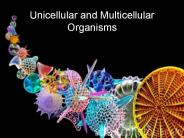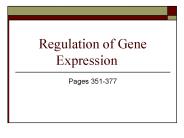Multicellularity PowerPoint PPT Presentations
All Time
Recommended
Multicellularity Colonies: cyanobacteria and choanoflagellates Sponges as organisms
| PowerPoint PPT presentation | free to download
Colonies: cyanobacteria and choanoflagellates. Sponges as organisms ... Sponges as organisms. Figure 33.2 Sponges. Figure 33.3 Anatomy of a sponge ...
| PowerPoint PPT presentation | free to view
Physics and Biology of Multicellularity
| PowerPoint PPT presentation | free to view
Has been observed many times in nature. Most accepted theory. Green ... short generation times and reproduce very ... .dk/staff/dave/roanoke/bio101ch06.htm ...
| PowerPoint PPT presentation | free to view
Title: Wonderful world of Fungi! Author: Department of Life Sciences Last modified by: Burchett, Greg Created Date: 4/6/2002 7:38:01 PM Document presentation format
| PowerPoint PPT presentation | free to view
Motility, Mixing, and Multicellularity
| PowerPoint PPT presentation | free to view
Multicellular and Tissue Level Organization Chapter 9 Multicellularity Multicellularity Multicellular organisms have existed for 550 million years 10 % of geological ...
| PowerPoint PPT presentation | free to view
http://micro.magnet.fsu.edu/moviegallery/pondscum/protozoa/volvox/index.htm l ... Kirk, David L. Volvox: Molecular-Genetic Origins of Multicellularity and ...
| PowerPoint PPT presentation | free to view
Multicellularity and cell specialization enabled organisms to ... lines the interior of the coelom but does not surround the endodermic gut. 'false body cavity' ...
| PowerPoint PPT presentation | free to view
organelles - mitochondria, chloroplasts via symbiosis. nucleus ... possible advantage to aerobic respiration (mitochondria) Evolution of multicellularity ...
| PowerPoint PPT presentation | free to view
Individual cells that cooperate together in a colony to behave like a ... Good for studying the origins of multicellularity because easy to find (pond scum! ...
| PowerPoint PPT presentation | free to view
Scientific American 'Bacteria as Multicellular Organisms' ... Sporulation and Formation of Dormant Cells. Exchange of Genetic Information. Mutation ...
| PowerPoint PPT presentation | free to view
Bacteria & Protists Labs 14 Photosynthetic Protists Green Algae Phylum Chlorophyta. Multicellular & Unicellular examples. Chlorophyll a & b in chloroplasts ...
| PowerPoint PPT presentation | free to view
Unicellular organisms may form groups, chains, films, colonies, etc. but this ... Volvox is an example of a unicellular colonial eukaryotic microorganism (algae) ...
| PowerPoint PPT presentation | free to view
Biology 320 Invertebrate Zoology Fall 2005 Highlights from Chapter 4 Introduction to Metazoa Metazoans Multicellular organisms Really we are referring to members ...
| PowerPoint PPT presentation | free to view
A protist is any organism that is not a plant, an animal, a fungus, or a(an) eukaryote. prokaryote. eubacterium. archaebacterium. 5 4 3 2 1 Multicellular protists are ...
| PowerPoint PPT presentation | free to view
Rapid diversification of multicellular life forms, including animals ... A: Ovum, or Egg Cell, of Ostrich ( yolk of unfertilized egg) ...
| PowerPoint PPT presentation | free to view
Chapter 9 Eukaryotic Cells and Multicellular Organisms Figure CO: Oblong shaped Giardia Courtesy of Dr. Stan Erlandsen/CDC Eukaryote Origins Remain Unclear Which came ...
| PowerPoint PPT presentation | free to view
Similar cell wall construction machinery ... Walled spores in sporangia. Male & female gametangia* Multicellular, dependent embryos ...
| PowerPoint PPT presentation | free to view
The Kingdom Fungi Chapter 21 Structure and Function of Fungi Structure and Function Multicellular (except yeasts) Composed of hyphae thin filaments one cell thick ...
| PowerPoint PPT presentation | free to download
Unicellular and Multicellular Organisms Unicellular Organisms Unicellular organism are one celled living things. Algae are one celled organisms that contain ...
| PowerPoint PPT presentation | free to download
BOTANY The Study of the plant kingdom Examples Characteristics of Plant Kingdom Are multicellular eukaryotes that are photosynthetic autotrophs Contain chloroplasts ...
| PowerPoint PPT presentation | free to download
... Porifera Overview Most primitive of the multicellular animals There is some debate if sponges are complex colonial protozoans ... Evolution Characteristics ...
| PowerPoint PPT presentation | free to view
Multicellular Organisms Cell Teamwork: The Processes of Life Objectives At the end of this PowerPoint, you will be able to: Explain the common problems that ...
| PowerPoint PPT presentation | free to view
Chapter 18: Classification 18-1 History of Taxonomy 18-2 Modern Phylogenetic Taxonomy 18-3 Two Modern Systems of Classification (F) Kingdom Animalia Multicellular ...
| PowerPoint PPT presentation | free to view
Review the Animal Kingdom 4 Major Characteristics? Multicellular Eukaryotic Heterotrophs Cells lack cell walls
| PowerPoint PPT presentation | free to download
9 Phyla of the Animal Kingdom Common Animal Characteristics Multicellular (many cells) Eukaryotic (cells contain nucleus) Heterotrophic (must eat) Lack cell walls ...
| PowerPoint PPT presentation | free to view
Chapter 3 Lesson 2 How do unicellular and multicellular organisms differ? How does cell differentiation lead to the organization within a multicellular organism?
| PowerPoint PPT presentation | free to download
General Histology Epithelium Blood Fertilization: formation of zygote Cleavage: becoming multicellular Gastrulation: fomation of 3 primary tissues ectoderm ...
| PowerPoint PPT presentation | free to view
Classification Biology I Kingdom Animalia All eukaryotic, multicellular, heterotrophic, motile (most) organisms Common Phyla: Porifera (sponges, corral) Cnidaria ...
| PowerPoint PPT presentation | free to view
Title: 31.1 Animals are multicellular heterotrophs without cell walls. Some General Features of Animals Animals are multicellular heterotrophs that are diverse in ...
| PowerPoint PPT presentation | free to view
The Six Kingdoms What kingdom do these organisms belong to? Plant multicellular eukaryotes autotrophs What kingdom do these organisms belong to?
| PowerPoint PPT presentation | free to view
Introduction to Cells Unit 4 Unicellular or multicellular Leaf Cells Eukaryotic or prokaryotic? Unicellular or multicellular Protists Eukaryotic or prokaryotic?
| PowerPoint PPT presentation | free to view
The Kingdom ANIMALS Eukaryotic cells Multicellular Heterotrophic by ingestion External Fertilization vs Internal Fertilization a. Invertebrate Chordates: Tunicates ...
| PowerPoint PPT presentation | free to view
Body Structure The morphology of multicellular fungi Enhances ability to absorb nutrients Chitin Reproductive structure. The mushroom produces tiny cells called spores.
| PowerPoint PPT presentation | free to download
What is a Plant? with Plant Diversity Chapter 21 & 22 What is a plant? Multicellular eukaryote Produce their own food through photosynthesis Have thick cell walls ...
| PowerPoint PPT presentation | free to view
Kingdom Animalia What s an Animal? Eukaryotic multicellular heterotrophs without cells walls. This includes a HUGE number of organisms you may not think of as ...
| PowerPoint PPT presentation | free to view
EVOLUTION OF ANIMALS CHARACTERISTICS OF ANIMALS Multicellular Eukaryotic Heterotrophic (ingestion) No cell walls Nervous & muscle tissue Sexual reproduction Hox genes ...
| PowerPoint PPT presentation | free to view
LAND PLANTS AND THEIR EVOLUTION Chapter 19 Characteristics of Plants Multicellular autotrophs Cell wall of cellulose Food stored as starch Evolved from green algae
| PowerPoint PPT presentation | free to view
Introduction to Cells Unit 4 Unicellular or multicellular Onion Root Cells Eukaryotic or prokaryotic Unicellular or multicellular? Athlete s Foot Fungus Eukaryotic ...
| PowerPoint PPT presentation | free to view
Fungus Characteristics -eukaryotic cells - multicellular / unicellular (yeast) - heterotrophs : many are decomposers Structures - hyphae : basic unit of multicellular ...
| PowerPoint PPT presentation | free to view
Introduction to Biology Unit 4 8. Unicellular or Multicellular Protists Eukaryotic or Prokaryotic? Did You Answer Correctly? E. coli bacteria cells = unicellular ...
| PowerPoint PPT presentation | free to download
KINGDOM PLANTAE CHAPTERS 27-31 CHARACTERISTICS Autotrophic, eukaryotic, multicellular, primarily diploid but some triploid (corn) Plant-like protists (algae) is the ...
| PowerPoint PPT presentation | free to view
... of Living Things Made of Cells unicellular vs.. multicellular Red Blood cells Onion skin epidermal cells Human ... reproduction: - asexual ... human beings 2 ...
| PowerPoint PPT presentation | free to download
Rotifers Rotifera Unknown relationship to other phyla Pseudocoelomate Protonephridia Ciliated lobes whirl water into mouth Parthenogenesis Smallest multicellular ...
| PowerPoint PPT presentation | free to view
Overview of the Six Kingdoms Vocabulary Which term means one-celled? Many-celled? multicellular unicellular Which term means that the organism produces its own food?
| PowerPoint PPT presentation | free to view
Animals = invertebrates and vertebrates (95% of all animals are invertebrates) Animal Characteristics The bodies of animals are multicellular.
| PowerPoint PPT presentation | free to view
Characteristics of Living things All living things have cells Basic unit of life Unicellular- made of only one cell Multicellular- made of 2 or more cells All ...
| PowerPoint PPT presentation | free to download
Introduction to Biology Unit 4 7. Unicellular or Multicellular Leaf Cells Eukaryotic or Prokaryotic? 8. Unicellular or Multicellular Protists Eukaryotic or ...
| PowerPoint PPT presentation | free to view
Ch. 22 Plant Diversity 22-1: Introduction to Plants Kingdom Plantae: Multicellular eukaryotes Cell walls Cellulose Develop from multicellular embryos ...
| PowerPoint PPT presentation | free to view
Cell Division Multicellular organisms Important in growth and development Single celled organisms Important for reproduction Goals To create 2 identical daughter cells
| PowerPoint PPT presentation | free to view
Aim: What is the level of organization in multicellular organisms? I. Levels of Organization A. Cells B. Tissues a group of cells that work together to perform ...
| PowerPoint PPT presentation | free to view
Chapter 11 Protists Protist Charateristics Protists unicellular or multicellular eukaryotes that may be autotrophic or heterotrophic Autotrophs are organism ...
| PowerPoint PPT presentation | free to view
La regolazione dell espressione genica Tutte le cellule di un organismo multicellulare possiedono tutti i geni della propria specie; tuttavia solo una piccolissima ...
| PowerPoint PPT presentation | free to download
A program of differential gene expression leads to the different cell types in a multicellular organism. Cancer results from genetic changes that affect cell cycle ...
| PowerPoint PPT presentation | free to download
Kingdom Animalia Characteristics Multicellular Eukaryotic with no cell walls Heterotrophs (consumers) Have a nervous system to respond to their environment ...
| PowerPoint PPT presentation | free to view
























































